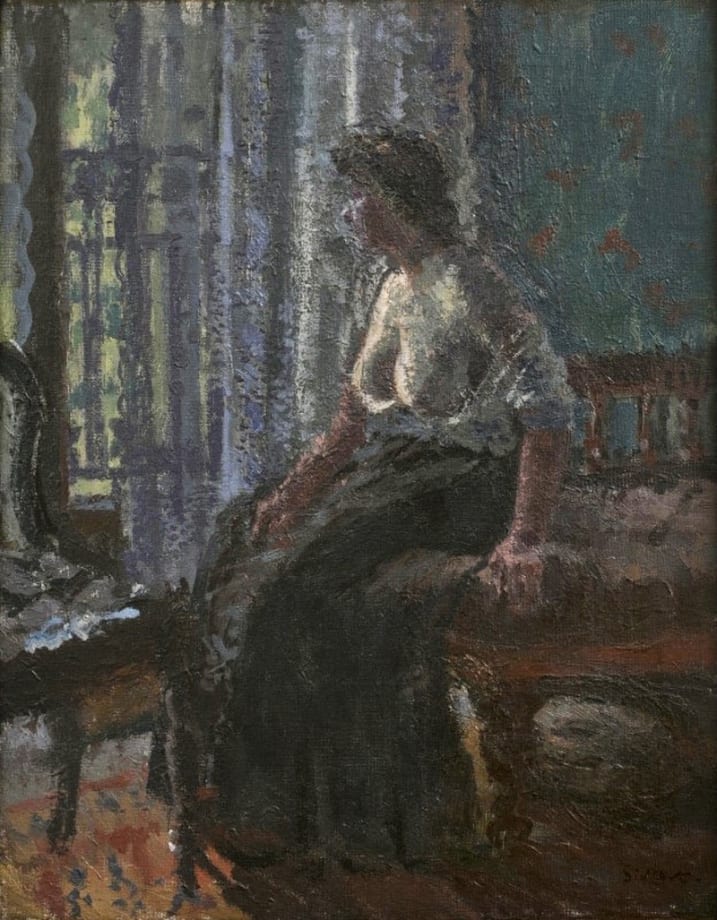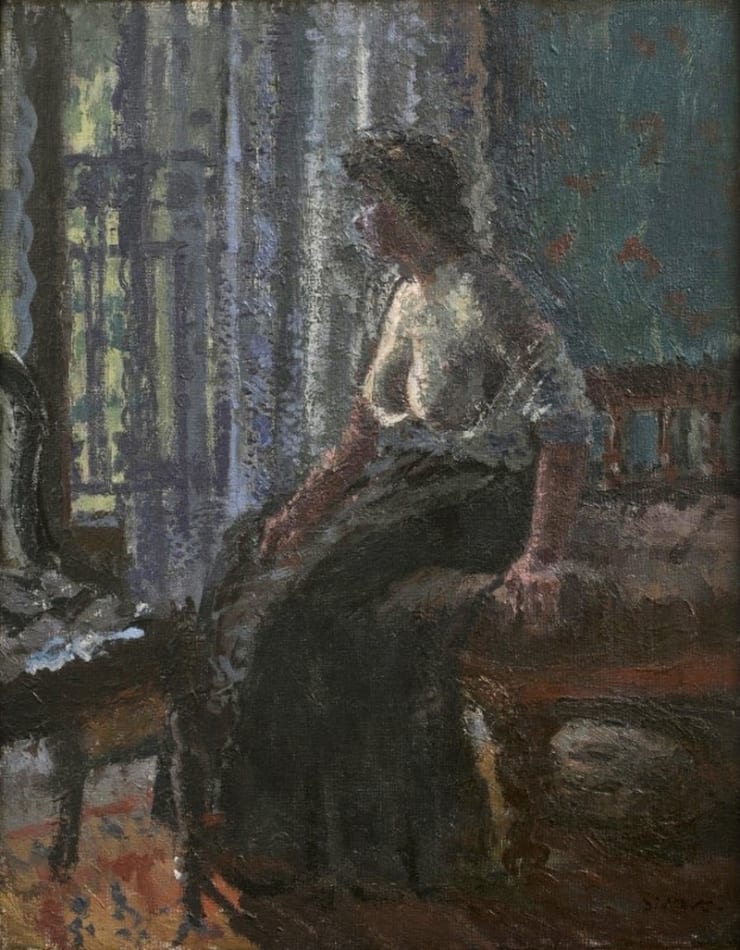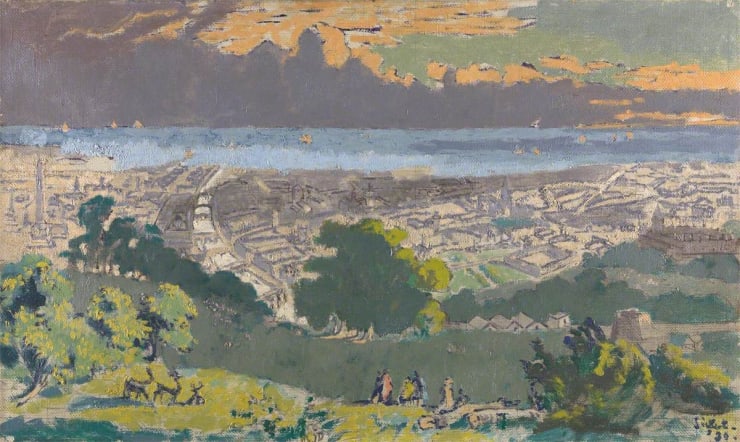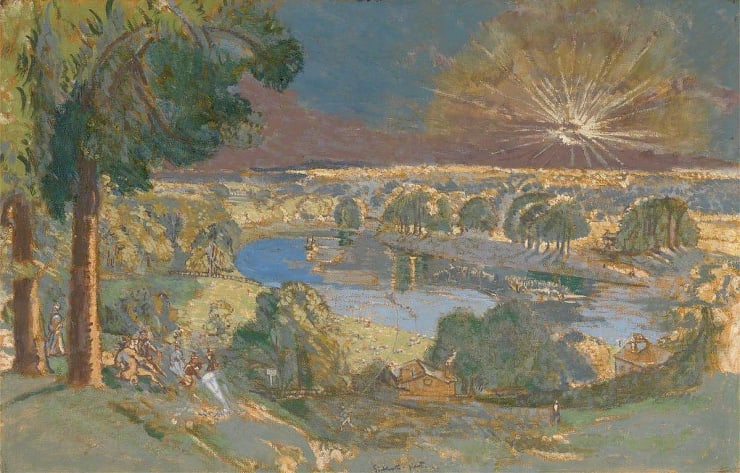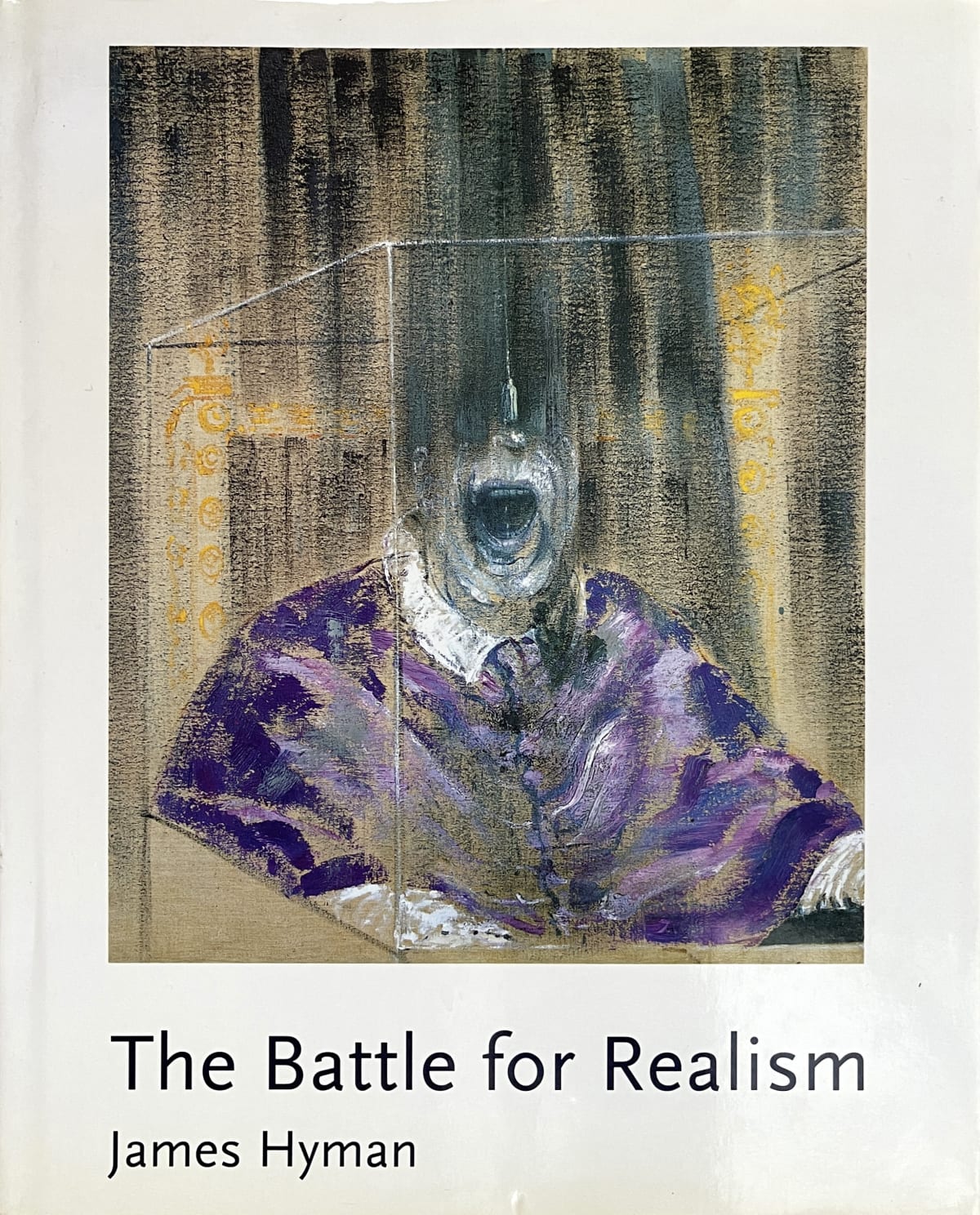Walter Richard Sickert 1860-1942
Walter Richard Sickert, born in Munich, Germany, was a painter and printmaker who was recognised during his own lifetime as an important artist, and in the years since his death has increasingly gained a reputation as one of the most influential figures in twentieth-century British art.
Starting out his career as a pupil and assistant to James Abbott McNeill Whistler, Sickert later met Edgar Degas whose use of pictorial space and emphasis on drawing would have an influential effect on Sickert's work. Sickert developed a personal version of Impressionism deploying sombre colouration. He was fascinated by urban culture and consequently worked from studios in working-class areas in London, such as Camden Town, in which location he would create a series of paintings on a local gruesome murder on a prostitute that took place in 1907. This series The Camden Town Murder caused controversy not only because of the title but also due to the lugubrious nudes depicted in the paintings and ensured attention for Sickert's work. He furthermore was a founding member of the Camden Town Group, a group of British painters influenced by Post-Impressionism and Expressionism, concentrating on drab daily domestic scenes. Sickert not only concentrated on domestic scenes; scenes of Venice, music halls, theatre scenes and portraits were also important parts of his body of work. He consistently created his paintings in his studio working from drawings made on the spot and later from news photographs or snap shots. Sickert was universally acknowledged as a colourful, fascinating and charming artist, who championed progress and modernity in painting, but who remained an independent figure who was difficult to catagorise under the major movements in British art. His status as a notable but underestimated figure changed as his work was reassessed in the second half of the 20th century. Exhibitions in the Hayward Gallery in 1981 and the Royal Academy in 1992, as well as several publications on his work have established Sickert's important contribution to British modernism.
-

Celebrating 25 Years of James Hyman Gallery
27 Oct - 20 Dec 202427th October 2024 marks twenty five years since the founding of James Hyman Fine Art in 1999. To mark this anniversary we are staging a special online exhibition. Based in St James’s and Mayfair for most of this time, the gallery has specialised in Twentieth Century British Art with a...Read more -

Modern British Art 2024
Rarities. An Online Exhibition 19 Jul - 1 Sep 2024We are pleased to present this summer selection of 20th Century British works. The focus is on rarities. These include previously unrecorded photographs by John Deakin, a rare 1960s Derrick Greaves, one of Kossoff’s largest and most powerful portrait works on paper, historically important works by Eduardo Paolozzi and Nigel...Read more -

Modern British Art 2022
29 Mar - 31 May 2022Read more -

Special Charity Fundraiser for The Trussell Trust
7 - 30 Dec 2020The Trussell Trust supports a nationwide network of food banks to provide emergency food and support to people locked in poverty, and campaigns for change to end the need for food banks in the UK. James Hyman, Gallery Director, said: This year we have presented a series of online fundraising...Read more -

Special Fundraising Sale for the National Health Service
29 Mar - 29 May 2020Unfortunately, NHS Hospital staff, on the front line in the treatment of patients with Covid-19, are still working without the proper PPE (personal protective equipment), and there remains a shortage of testing kits and ventilators. As everyone pulls together I have been thinking what I can do as an art...Read more -

Twentieth Century British Art 2012
6 - 21 Dec 2012Artists whose work is presented include: Frank Auerbach Tony Bevan John Bratby Edward Burra Jake & Dinos Chapman Geoffrey Clarke Prunella Clough John Davies Eric Gill David Hockney Gary Hume Conrow Maddox Robert Medley Paul Noble Hughie O'Donoghue Eduardo Paolozzi Peter Phillips Walter Richard Sickert Jack Smith William Turnbull and...Read more -

Beyond the Human Clay
5 May - 18 Jun 2011In 1976 the great figurative painter and polemicist R.B. Kitaj organized a group exhibition for the Arts Council of Great Britain entitled The Human Clay. To mark the 35th anniversary of Kitaj's seminal exhibition and to celebrate a decade of exhibitions focused on Twentieth Century British figurative art at James...Read more -

From Life. Radical figurative art from Sickert to Bevan
Michael Andrews, Frank Auerbach, Tony Bevan, David Bomberg, William Coldstream, Leon Kossoff, Walter Sickert, Euan Uglow 10 Sep - 18 Oct 2003A spine runs through some of the most radical figurative art in Britain of the twentieth century. Its backbone is drawing and its fibre art school teaching, yet it is the distinct personalities of each artist that provide the meat. From Walter Sickert to Tony Bevan, what impresses one most...Read more -

A Century of Drawing
Important modern British works on paper from the Camden Town School to Bridget Riley 2 Jul - 29 Aug 2003Read more -

Twentieth Century British Paintings and Drawings
1 Aug - 27 Sep 2002Read more
-
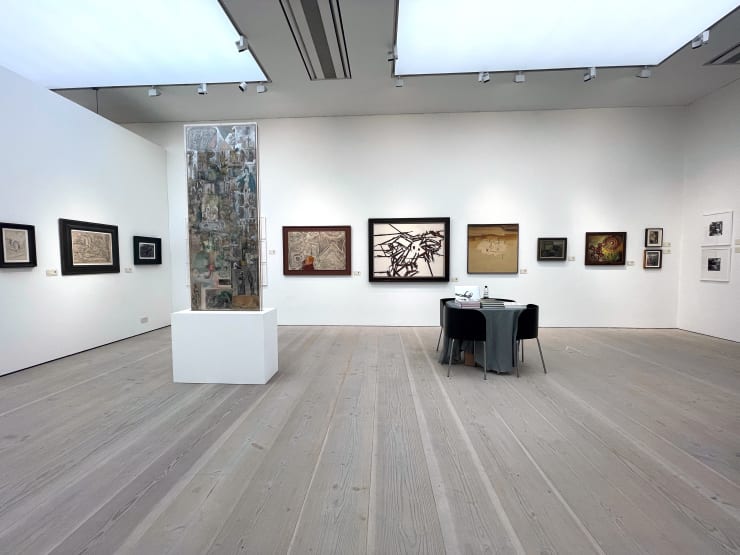
British Art Fair 2022
29 Sep - 2 Oct 2022Founded in 1988, British Art Fair is the only fair dedicated to Modern and contemporary British art. Each year, fifty leading dealers exhibit paintings, drawings,...Read more -
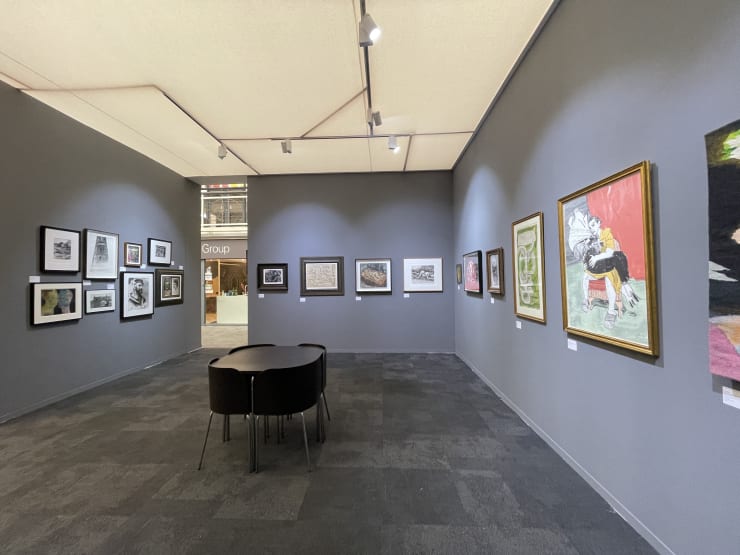
London Art Fair 2022
20 - 24 Apr 2022We are looking forward to exhibiting at the rescheduled London Art Fair in April. Our specially curated presentation will focus on important Modern British paintings...Read more
-

British Art Fair 2022
29 Sep - 2 Oct 2022Founded in 1988, British Art Fair is the only fair dedicated to Modern and contemporary British art. Each year, fifty leading dealers exhibit paintings, drawings, prints and sculptures covering all...Read more -

London Art Fair 2022
20 - 24 Apr 2022We are looking forward to exhibiting at the rescheduled London Art Fair in April. Our specially curated presentation will focus on important Modern British paintings and works on paper. We...Read more
